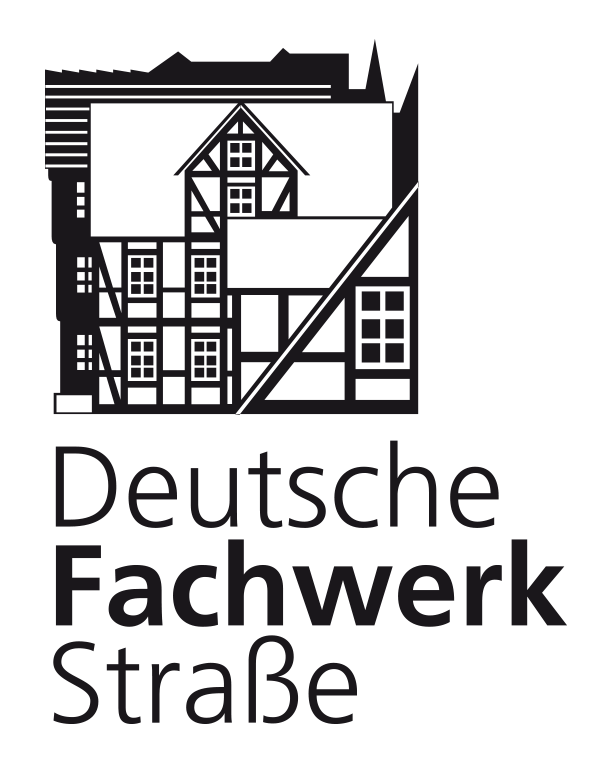Timber Frame Style
.Lower German Timber Frame
.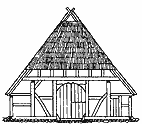
is characterized by two- and four-column constructions for large hangar-houses with a central hall accessible from the street. The ground plan of these houses consists of three naves. Originally, the side naves were sheds, the central nave was the hall and the bedrooms faced the garden. Especially in towns, the basic ground plan was changed early whereby the typical ”Utluchten“ developed.
Central German Timber Frame
.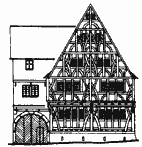
is spread in all medium-altitude mountains as far as the Neckar in the south, to Poland in the east and to the French Alsace in the west. Mostly, the gables of these houses face the street and the latter are divided into zones: the ”parlour“ is in front, then come the kitchen and stairway and the bedrooms are in the back. Sheds, the crop storage and the bakehouse were mostly in separate buildings and in larger settlements the houses were adapted to urban conditions.
Upper German Timber Frame
.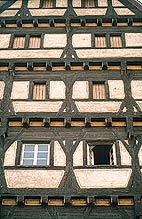
In the region between the river Neckar and Lake Constance, Black Forest and Bohemian Forest an independent type of house with wide column positions and double frame beams developed from the Alemannic floor-type building in 14th century. In 15th and 16th century more and more construction methods were adopted from Central Germany until the basic contruction methods became identical about 1600.
Andrew's Cross
.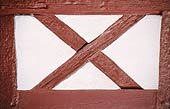
As a sign for multiplication, our early ancestors, the Germanic people, used ”the other cross“ which we still use in calculators. In Christian times, the other cross was re-interpreted as St. Andrew’s cross commemorating holy St. Andrew. In the flared form, St. Andrew’s cross is also called ”firedog“.
Fanned Rosette
.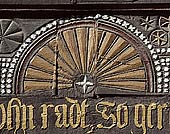
Especially in Lower Germany, the fanned rosette appears as an ornamental motif in the first third of 16th century and adopts a dominant role as breast apparel in the following centuries. The origin is supposed to be the shape of a shell but also symbols of the sun.
Grudger Heads
.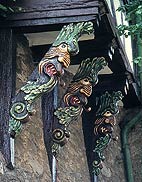
In the Middle Ages, one of the evils against which one had to defend oneself was not only ”the evil eye“ but also envy. Therefore ”Grudger Heads“, frowning heads or figures sticking out their tongues to grudgers, were fixed on the front of half-timbered houses.

